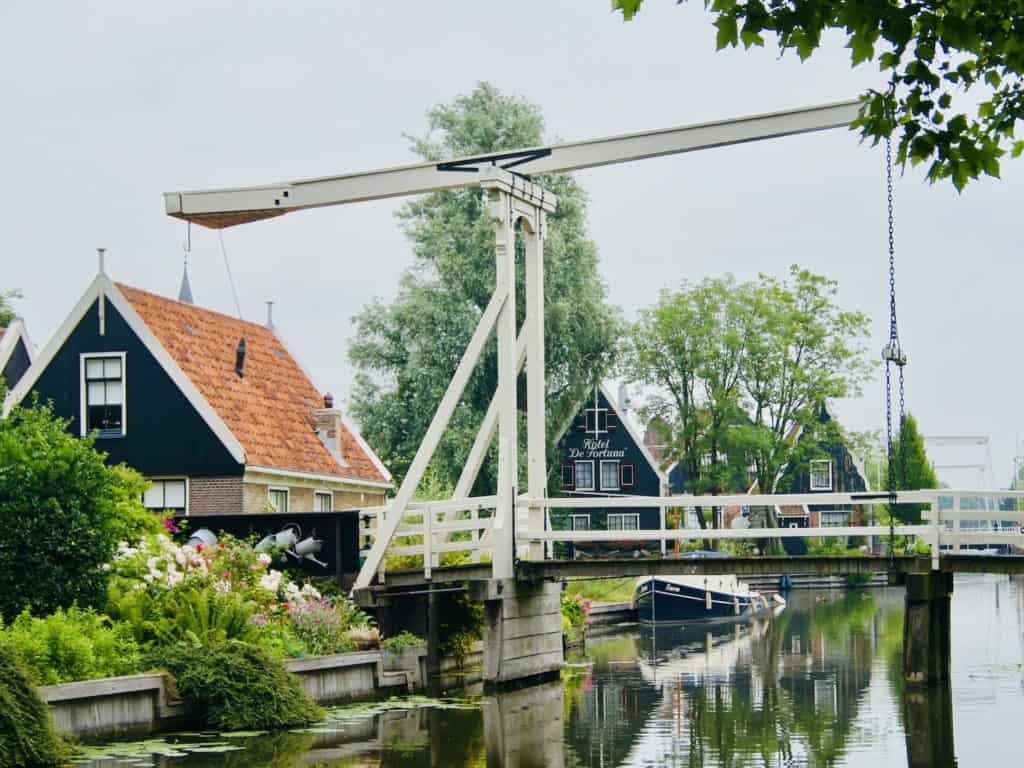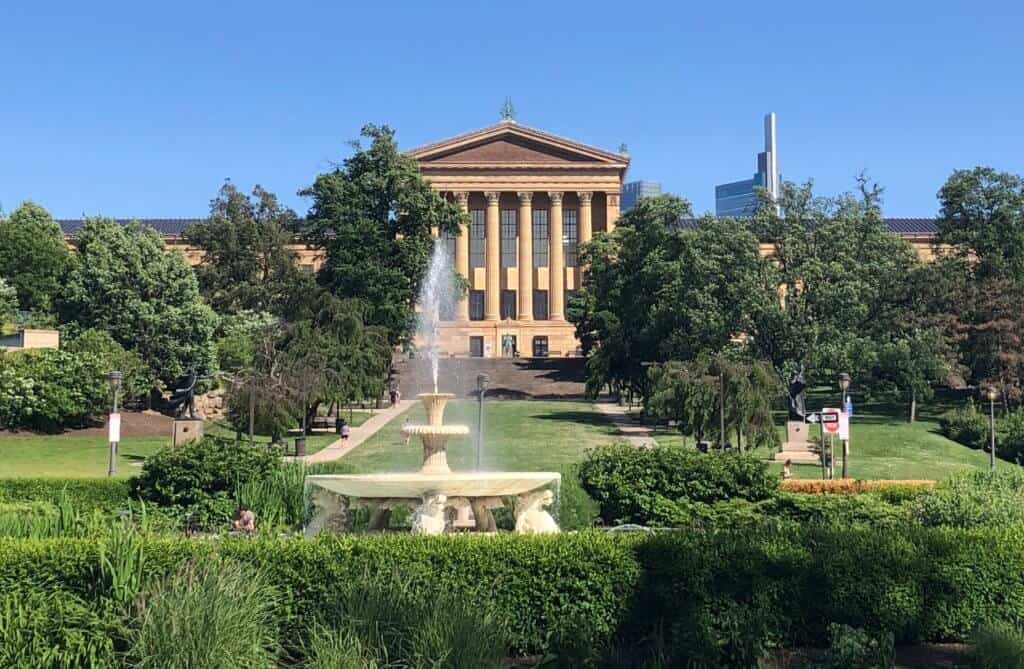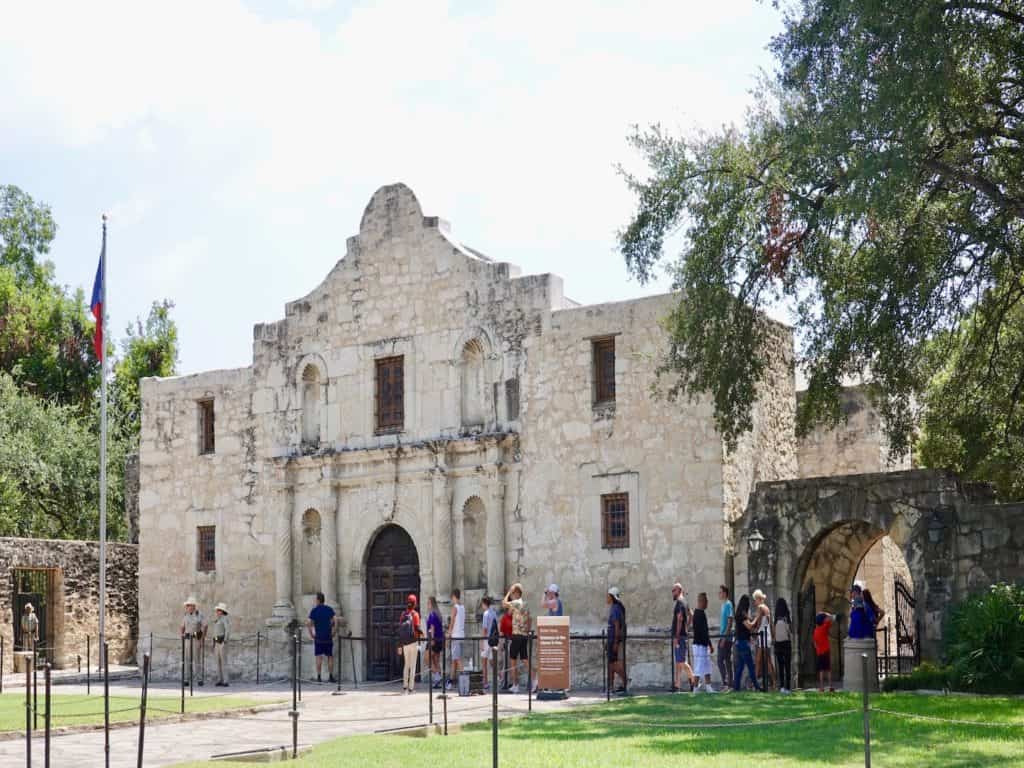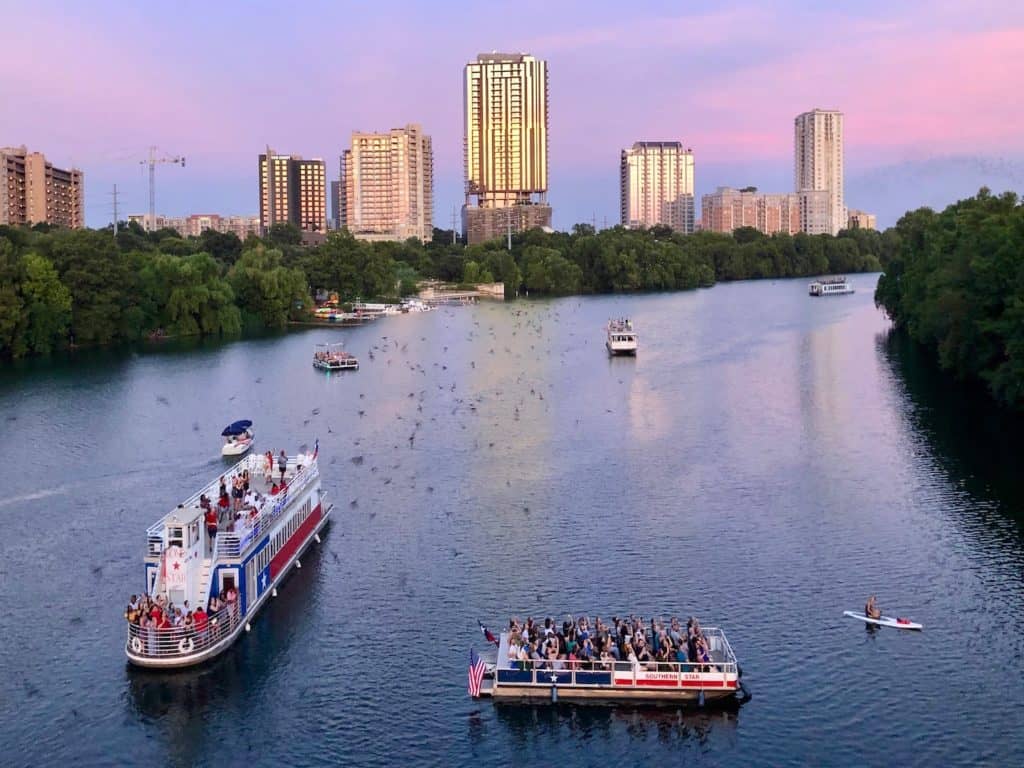Three historical cities comprise Virginia’s Historic Triangle: Jamestown, Williamsburg, and Yorktown. Each of these cities played pivotal roles in United States history. Jamestown was the first permanent English settlement in the 1600s. Williamsburg was the government seat for the Virginia colony in the 1700s. Yorktown was the site of the final battle of the American Revolutionary War in 1781 when the English army, that was fighting in the south, surrendered to the Americans. All three places are within a short drive of each other and make for an enjoyable journey back to some of the founding moments of the U.S.
Historic Triangle Itinerary
To explore the historical significance of each place, spend 3-4 days in the Historic Triangle. Plan on spending one day in Jamestown, one to two days in Williamsburg, and one day in Yorktown. In each section below is a brief history of that town followed by recommended places to visit there. Add extra days to your trip if you plan to visit nearby Busch Gardens, play golf, or take in some other activities that interest you. The Colonial Parkway — a tree-lined route free from any modern-day billboards or other distractions — connects the three towns with one another.
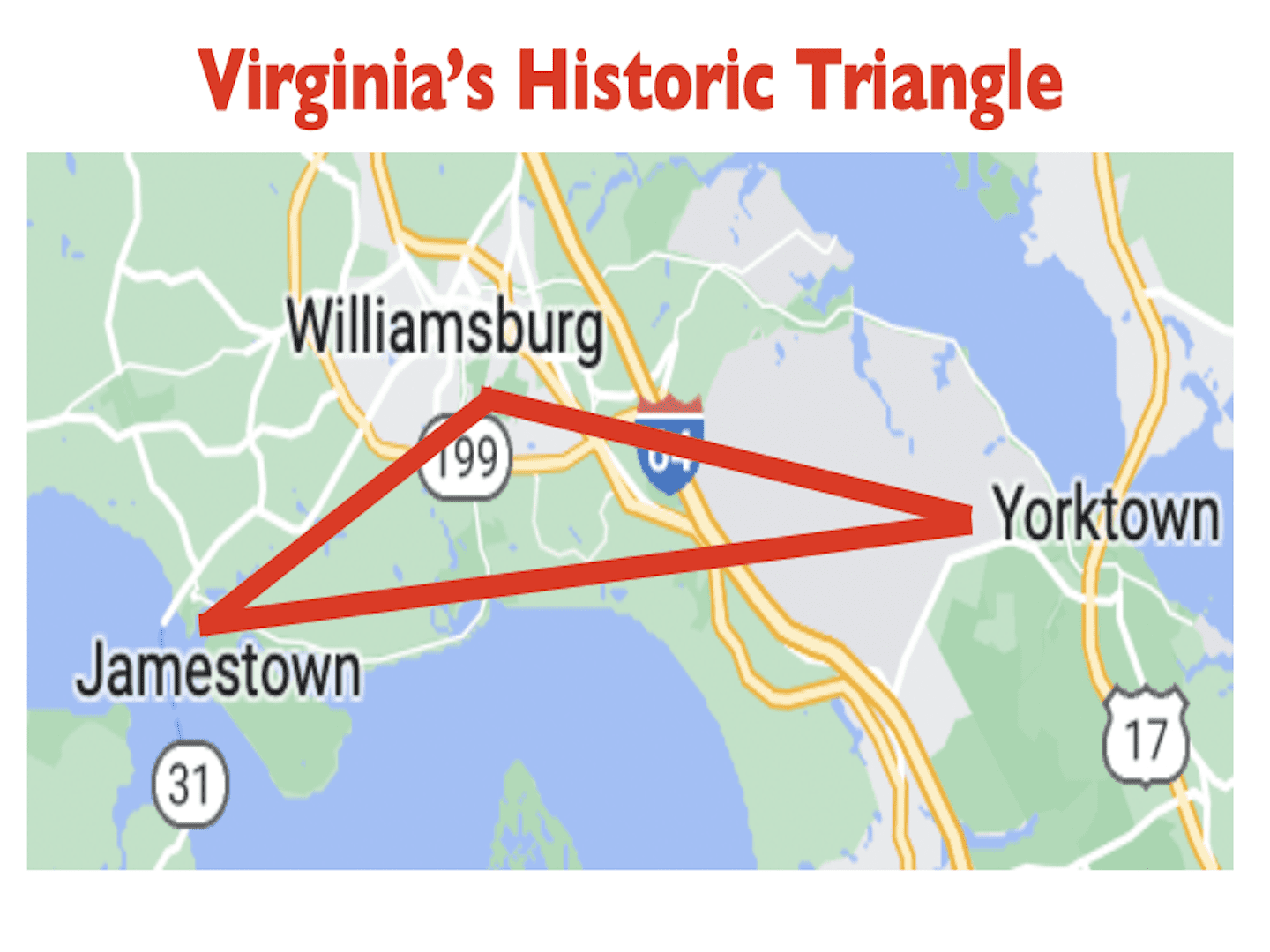
Jamestown
A Brief History of Jamestown
Jamestown was the first permanent English settlement founded in 1607 in what was to become the United States of America. One hundred and four English colonists left London on three ships (the Susan Constant, Discover, and Godspeed) in December 1606 on their westward journey. They traveled the trade winds to the Caribbean islands for restocking supplies and food, and finally arrived in what is now Jamestown on May 4, 1607. This is where Captain John Smith was originally put in charge (1608); Pochantas married John Rolfe (1610); Lord de la Warr served as the first royal governor of Virginia (1614); African slaves were brought (1609); and British women arrived to marry British settlers (1610).
Did you know? The American state of Delaware was named after Lord de la War. Virginia was named after the “Virgin” Queen Elizabeth I.
There are two excellent places to visit to understand early life in Jamestown.
Jamestown National Historic Site
Operated by the National Park Service, the Jamestown National Historic Site is the actual location of the original Jamestown settlement. Here you’ll find a re-creation of the original James Fort as well as foundations of other original buildings, the original Memorial Church tower, a burial ground, and an archeological museum. The museum is filled with interesting informational displays and artifacts (including money, pottery, tools, weapons, and two skeletons) found on site. James Fort remains an active archeological site.
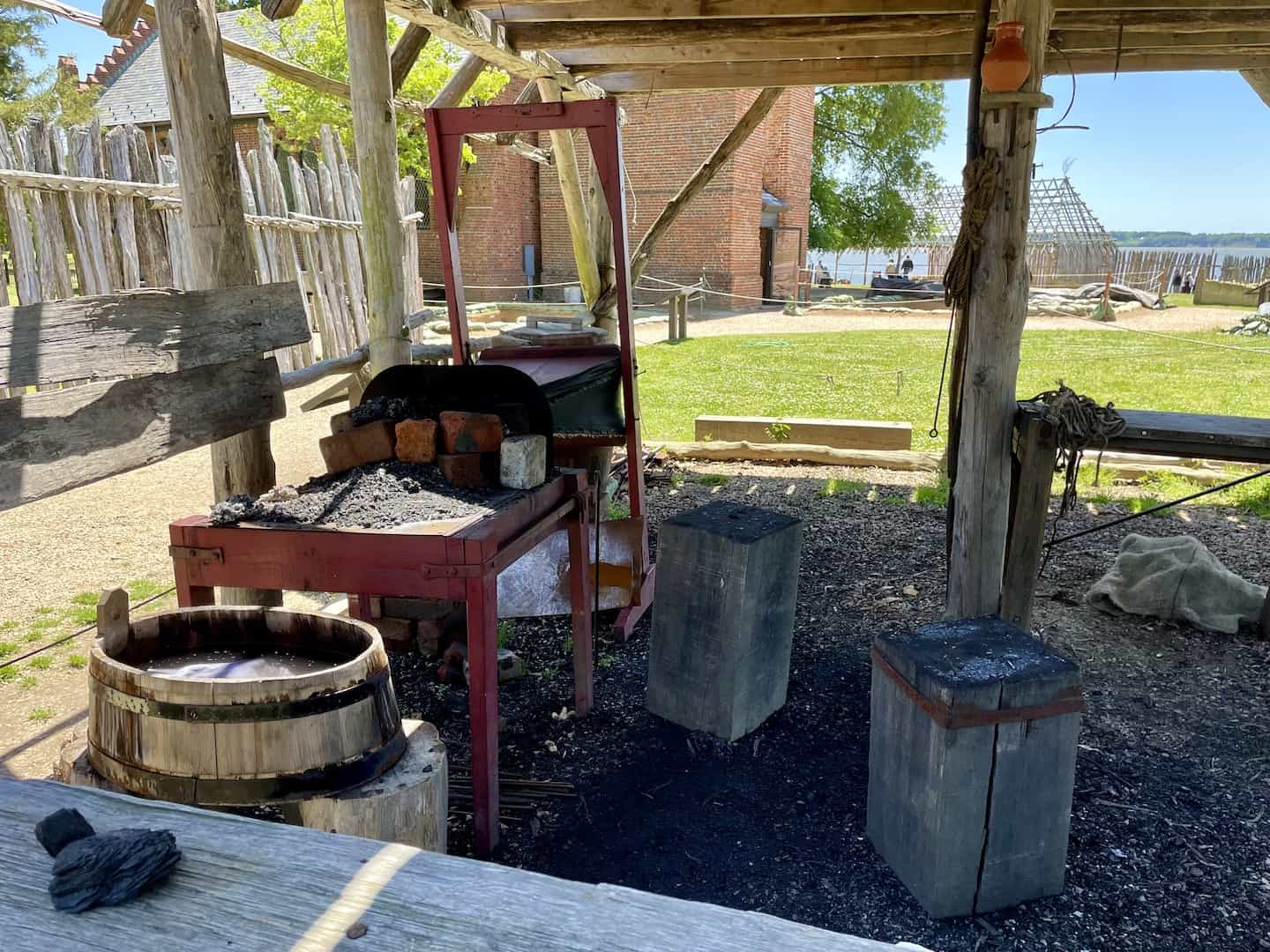
Just outside the fort is the “New Towne” where Jamestown residents lived and worked in the 1620s. Replica foundations in this area note where excavated foundations of 17th century buildings once stood.
Inside the visitor center is an introductory film and a museum area to provide context for the site. In addition, there is a scenic 5-mile Loop Drive and the Glasshouse where craftspeople create glass items using 17th century technology. TIP: Buy combined tickets with the Yorktown Battlefield, also a NPS site, and save money; visits do not need to be on the same day.1368 Colonial Parkway | 757-856-1200
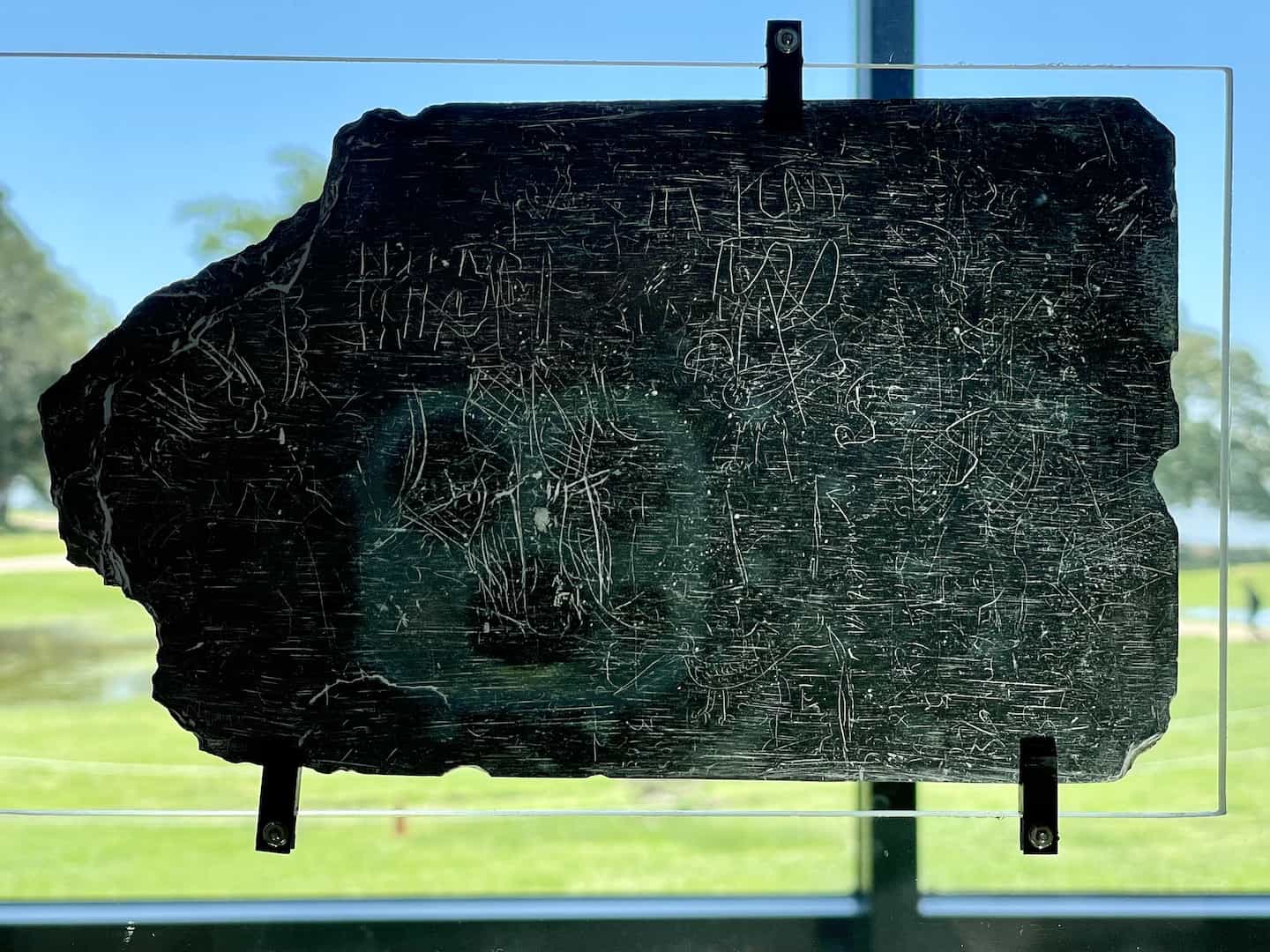
Jamestown Settlement
Just down the road is Jamestown Settlement that’s operated by the state. This is a popular living history museum that recreates what the early communities – both Native Americans and early settlers – were like. That includes re-creations of a Powhatan village, James Fort plus the three ships that sailed from England to Jamestown. Costumed interpreters explain the history throughout the complex and on the ships.
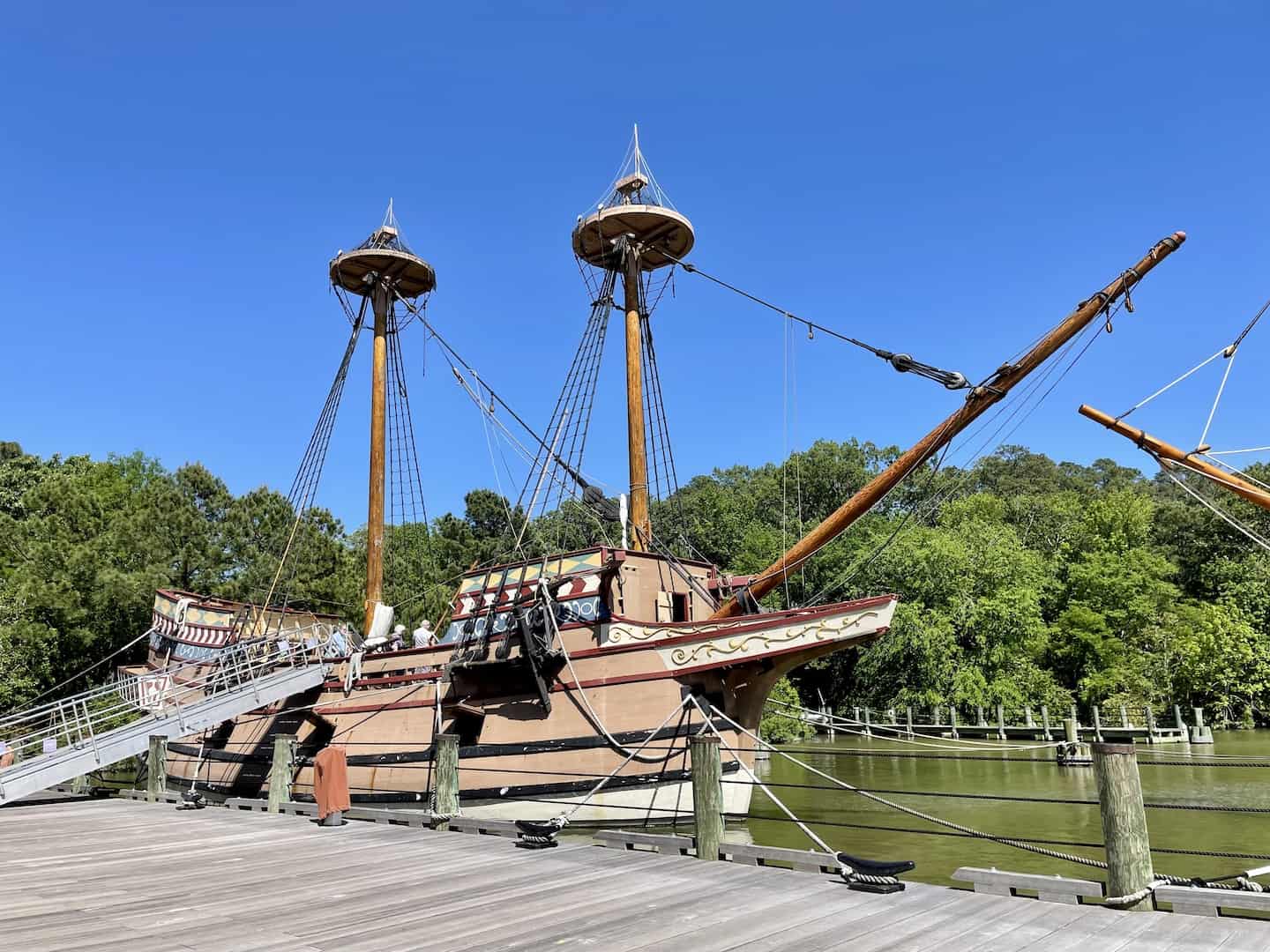
The visitor center has an introductory movie and extensive museum displays that tell the story of all those living in the area from before the 1600s and throughout that century. TIP: Buy combined tickets with the American Revolution Museum of Yorktown, also a state-run site, and save money; visits do not need to be on the same day. 2110 Jamestown Road | 757-253-4838
Williamsburg
A Brief History of Williamsburg
The British founded Williamsburg (then known as “Middle Plantation”) in 1632. The College of William and Mary was established here in 1693 – the second oldest institution of higher education in the United States.
Williamsburg became the capital of the Virginia colony in 1699 after it was moved from Jamestown, a low-lying area prone to flooding. Named after British King William III, Williamsburg was a thriving town and the center of politics in the Colony of Virginia. In time, colonists began to clash here with the British – both with the local royal governor (appointed by the British king) as well as the monarch across the Atlantic. One such incident occurred in April 1775, just after the Battles of Lexington and Concord. Known as the Gunpowder Incident, it involved the royal governor’s order to transfer some gunpowder from storage in the magazine to a Royal Navy ship. Colonists were incensed and rallied to return the gunpowder to storage in town. This conflict helped to inflame simmering hostilities between British control and the colonists.
Years later, in 1780, the capital once again moved – this time to Richmond – which was considered a safer place for the government during the American Revolutionary War.
The top attraction in Williamsburg is the expansive Colonial Williamsburg. While there, consider strolling to the Wren Building at the College of William and Mary (at the end of Duke of Gloucester Street). If you enjoy sampling wines, drive to Williamsburg Winery to taste some of their excellent wines.
Colonial Williamsburg
What visitors see today is Colonial Williamsburg, the largest living history museum in the country. (A partnership that included American financier John D. Rockefeller worked to restore the colonial capital for the public, thus creating Colonial Williamsburg in the early 1900s.) What stands today are the real streets and many of the buildings that once saw bustling activity when this town was the center of this colony’s politics for eight decades. Eighty-eight of the buildings in Colonial Williamsburg are original structures; other have been reconstructed. Archeologists continue to research areas in town, so they can continue to tell the stories of those who lived here in the 18th century.
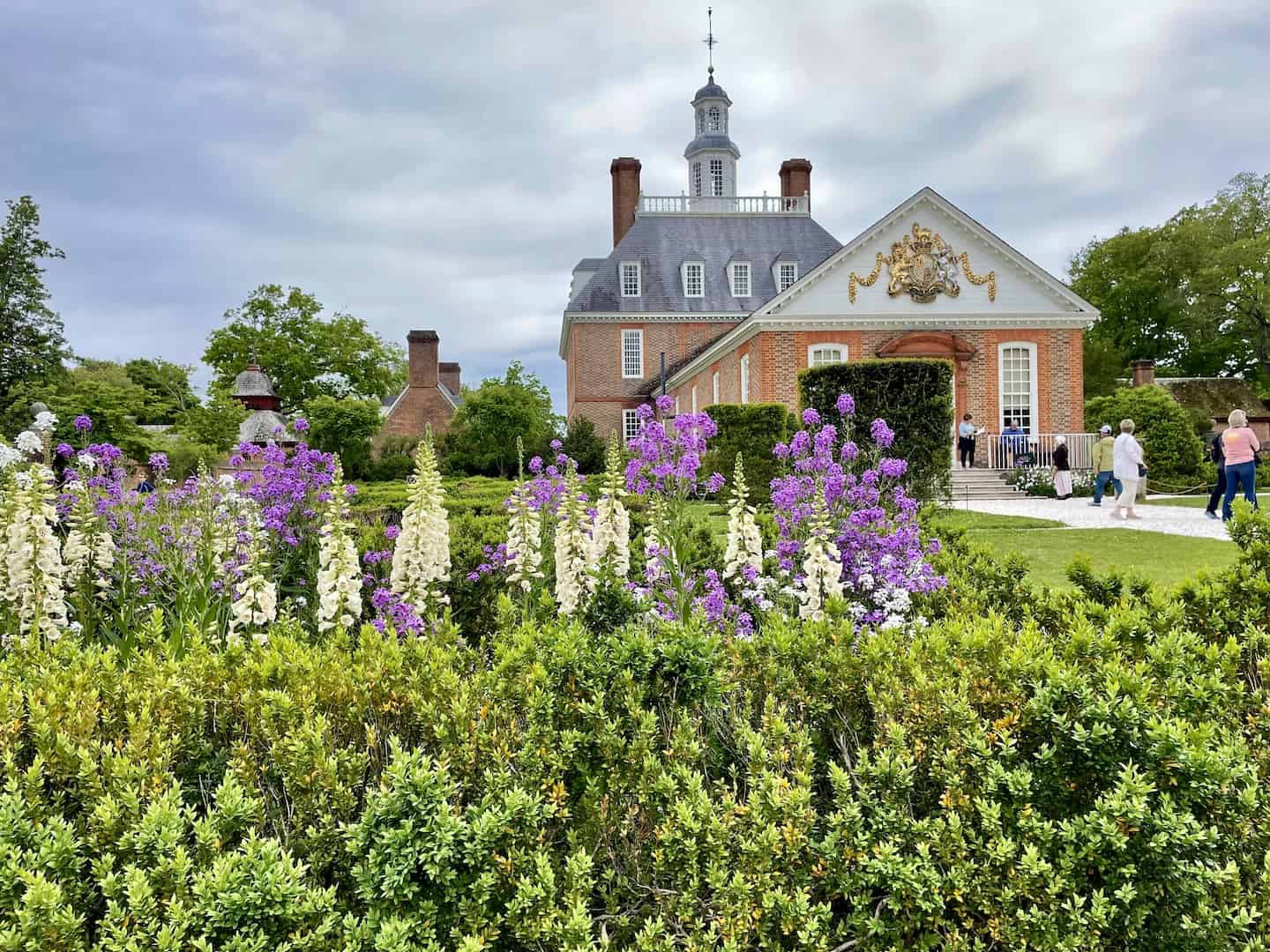
Highlights of Colonial Williamsburg are tours of the Governor’s Palace, the Capitol, and the wide variety of shops that are staffed by costumed tradespeople and historical interpreters to explain the importance of their trades and establishments to 18th-century Williamsburg. Tours of the Colonial Williamsburg buildings are included in the price of admission. Check online for the various ticket options as well as special events scheduled during your stay. For example, during one day of our visit, we were captivated by an actor portraying George Washington who related his experiences (free with ticket). That night we enjoyed a concert at the Governor’s Palace (additional cost).
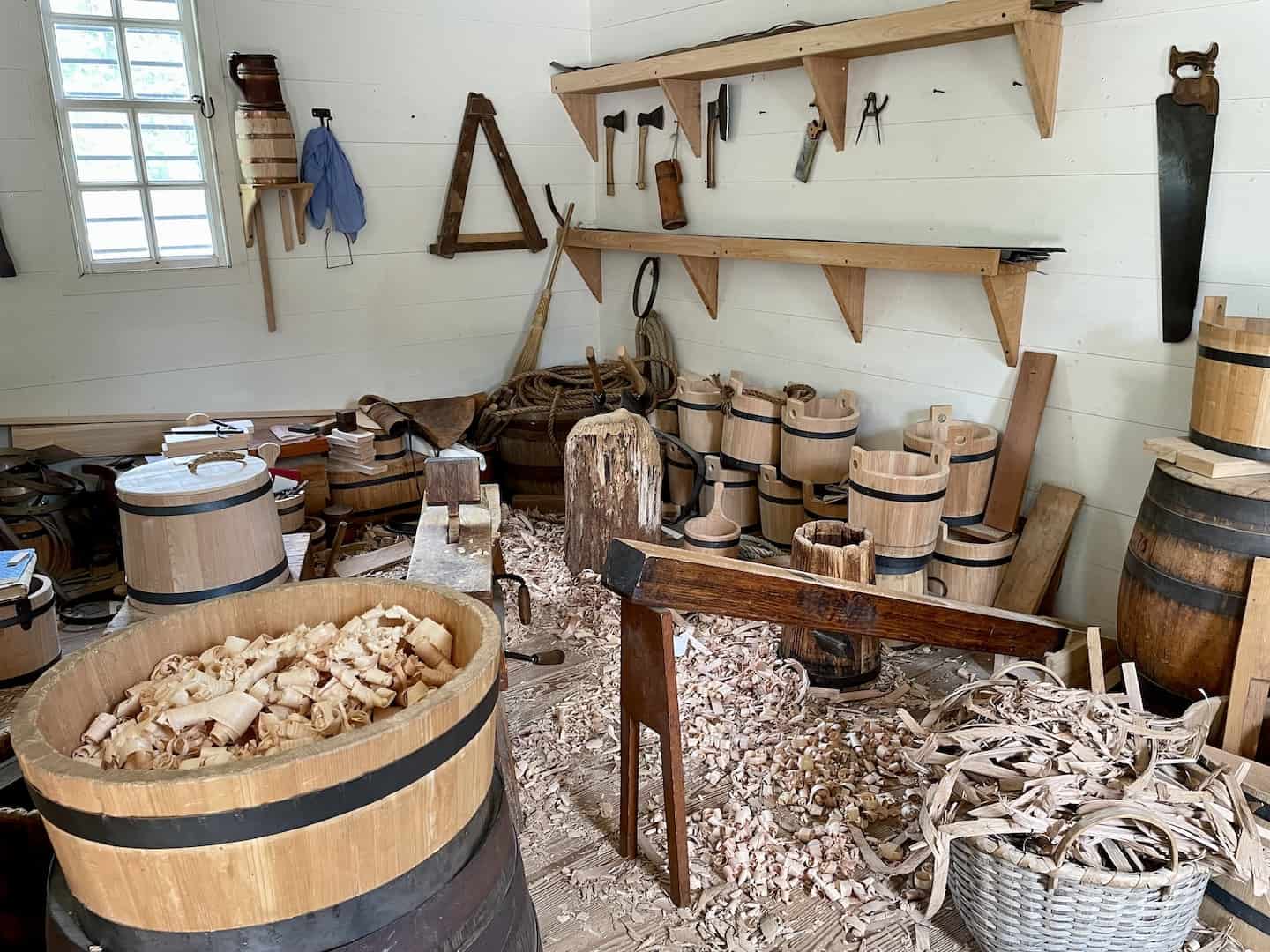
In addition, part of Colonial Williamsburg is Merchants Square that is home to great restaurants and shops. It’s located on the far western end of Duke of Gloucester Street.
Tips for Your Visit to Colonial Williamsburg:
- Download the Colonial Williamsburg app to order tickets and get the most out of your visit.
- The visitor center (101 Visitor Center Drive) is a short drive from Colonial Williamsburg itself. Shuttle buses ferry people at the visitor center to and from Colonial Williamsburg. Of course, if you’re staying in one of the Colonial Williamsburg properties – like the Williamsburg Inn, Williamsburg Lodge, or one of their colonial houses – you can simply walk to all the sites from your hotel (and there’s no need to drive to the visitor center). Very convenient.
- Colonial Williamsburg offers dining at its own restaurants featuring costumed servers and updated versions of classic colonial fare.
- Merchants Square – home to some great restaurants and shops – is located along Duke of Gloucester Street near the College of William and Mary. It’s easy to walk there from any place in Colonial Williamsburg.
- If planning to dine at one of the Colonial Williamsburg or Merchants Square restaurants, book your reservations ahead of your trip.
- Visit the bakery (on Duke of Gloucester Street near the Capitol) to purchase freshly baked ginger cookies (yum!), sandwiches, and other refreshments. There are picnic tables outside in the back for you to enjoy your treats.
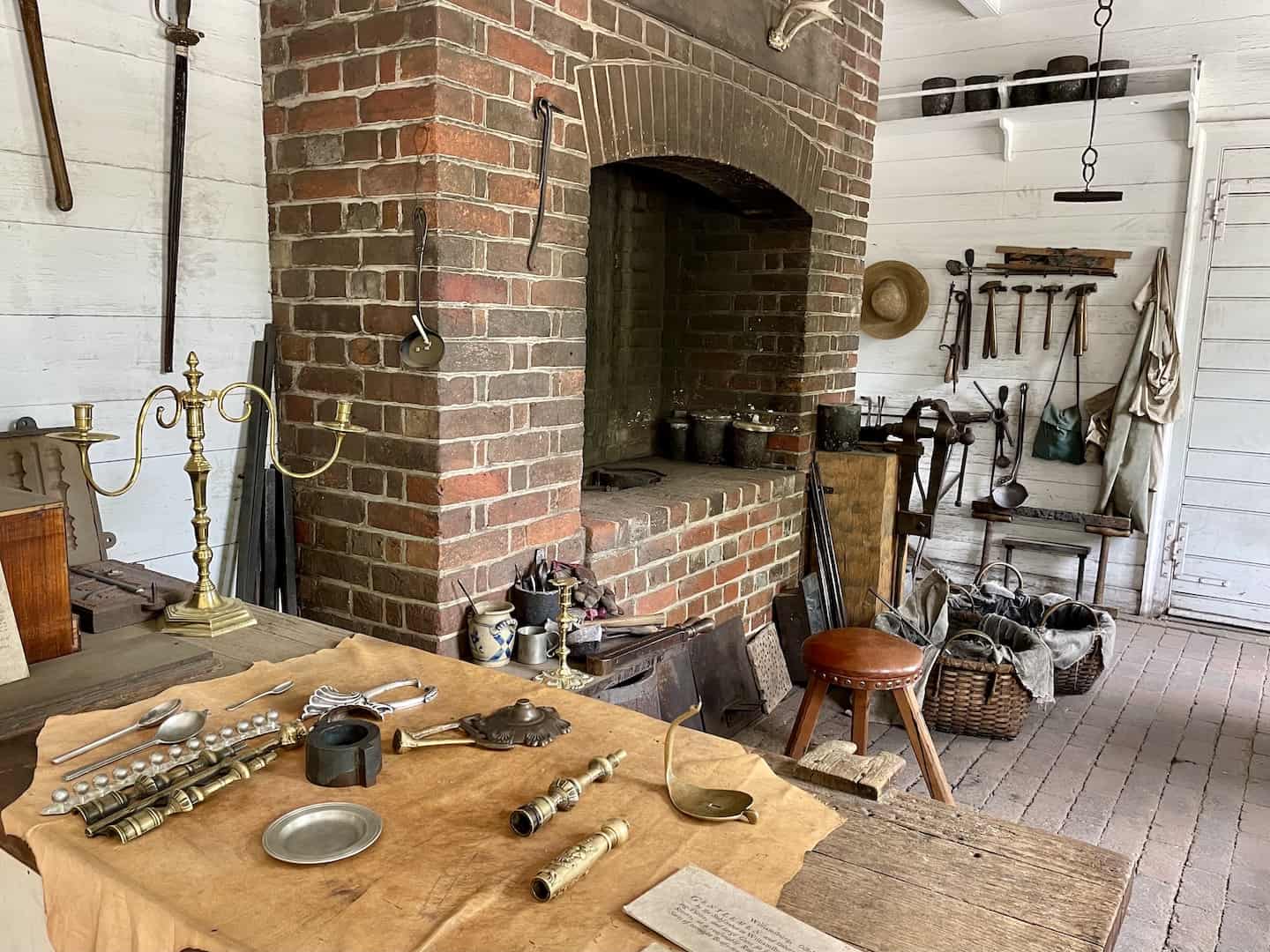
College of William and Mary
King William III and Queen Mary II of England chartered the school in 1693. (Hence the name of the college.) Constructed in the 1690s, the Sir Christopher Wren Building is the oldest college building in the United States, though it was not continually in use as a college. During the American Revolutionary War and the Civil War, it served as a hospital. The Wren Building now houses classrooms and faculty offices and is open to the public. Guarding the entry are two British howitzers that the Americans seized after their victory in the Battle of Yorktown. Walk inside the Wren Building and view an original 17th-century classroom on the first floor, complete with long wooden benches and slanted wooden “desktops” for students and a raised lectern for professors. This is a self-guided experience. No admission is charged. Enter the Wren Building from Duke of Gloucester Street side.
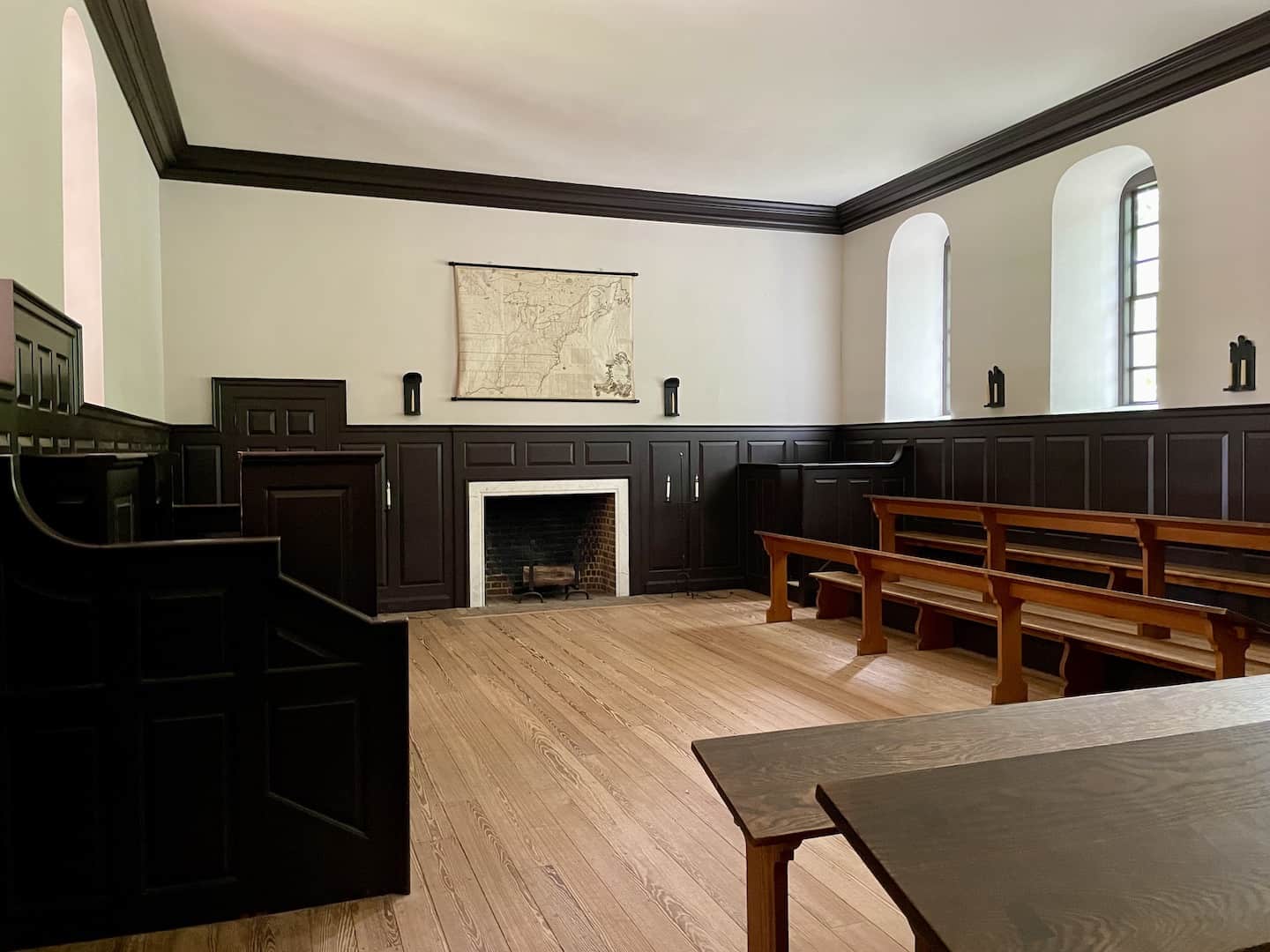
Williamsburg Winery
A few miles south of Colonial Williamsburg sits the Williamsburg Winery. There are several tasting options as well as wines by the glass or bottle. The wines with “Wexford” in the label were made from estate-grown grapes; the grapes for other wines were sourced from areas outside town. Pre-packaged snacks are available for purchase. (Williamsburg Winery products are sold in Colonial Williamsburg’s Merchants Square and at other nearby retailers.) 5800 Wessex Hundred, Williamsburg | 757-229-0999
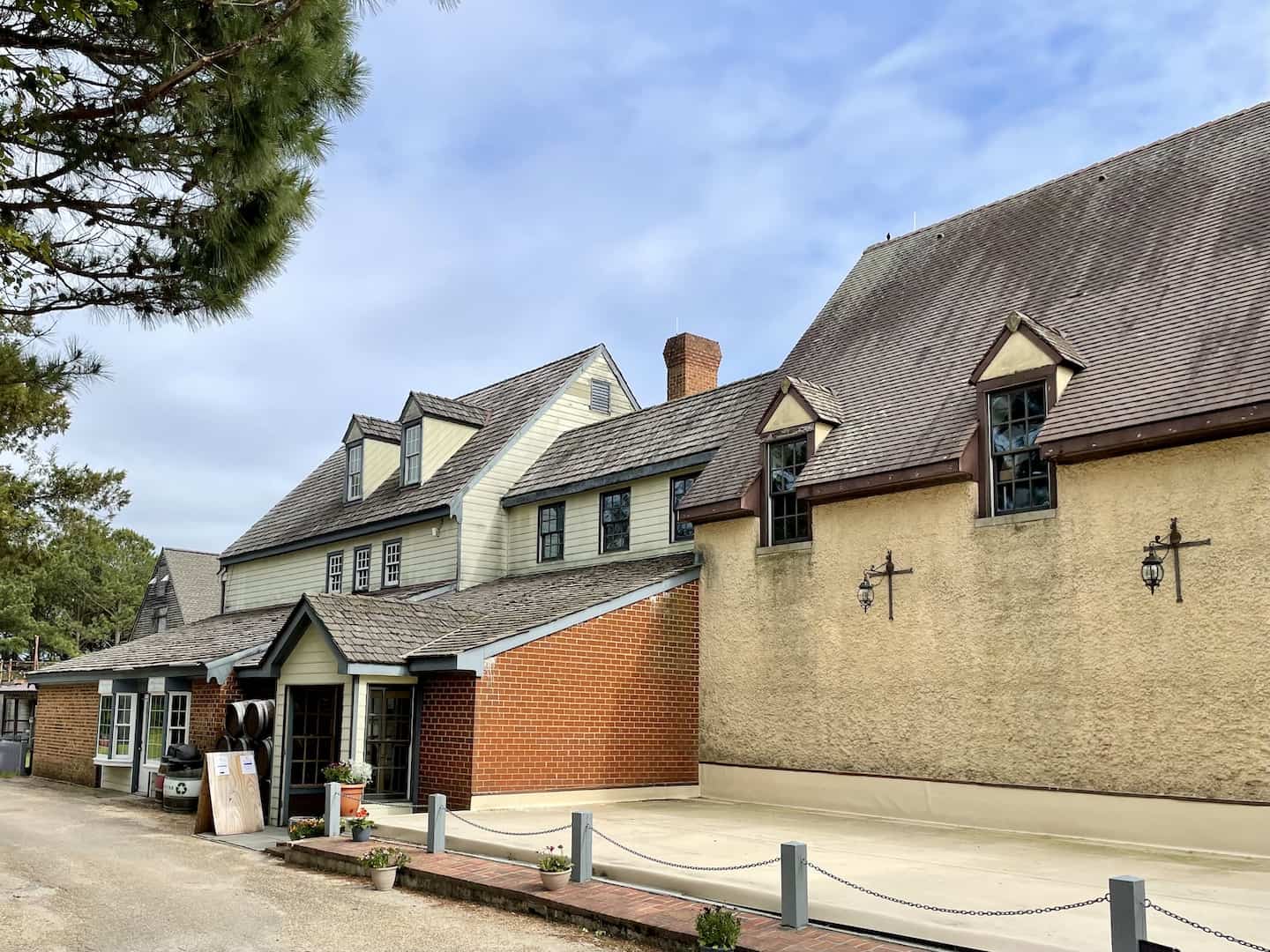
Yorktown
A Brief History of Yorktown
Yorktown was where British General Cornwallis surrendered to George Washington in October 1781, marking the last battle of the American Revolutionary War. The French worked closely with the American Patriots (those opposing British rule), providing military expertise as well as financial, troop, naval, and equipment support.
The allied American and French forces first arrived at Williamsburg. A few days later, they surrounded the British forces who were encamped in Yorktown along the York River. Working at night, the allied troops dug siege lines and later fired upon the British troops. The Allies quickly captured two strategic British redoubts (9 and 10), putting them closer to their foes. With muskets silenced (so as not to alert the British to their intentions) and bayonets fixed, they advanced on the British and engaged in hand-to-hand combat.
As Washington moved his troops to Yorktown, he suggested that the French fleet come up from the Caribbean and prevent the British fleet from re-supplying and/or evacuating Cornwallis. They did just that engaging and defeating the British fleet near the mouth of the Chesapeake Bay. As a result, Cornwallis was left to his own devices.
British General Cornwallis was running low on supplies and losing men in battle. He was also stuck between the now allied-controlled land to the west and the river to the east. His plan to cross the river to relative safety one night was foiled by a violent storm, making such a retreat too dangerous. Realizing he was out of military options, he surrendered. Shortly thereafter, his men marched on Surrender Field between two columns of armies: the French on one side, the Americans on the other. America’s independence from Great Britain was later ratified in the Treaty of Paris in 1783.
Four great spots in Yorktown make for a full day of history:
The Yorktown Battlefield Tour
Operated by the National Park Service, the Yorktown Battlefield visitor center offers a short movie to set the stage for a driving tour of the battlefield. In fact, there are two driving options. First, the red tour covers the battle itself and ends at Surrender Field where the British surrendered to the Allies. Second, the yellow tour begins at Surrender Field and guides visitors to the allied encampment areas. Visitors can opt for one or both of the driving tours. Along the way, get out at the stops and walk the land to get a feel for the action here over 200 years ago. 1000 Colonial Pkwy, Yorktown | 757-898-2410

Tips: 1) Buy combined tickets with the Jamestown National Historic Site, also a NPS site, and save money; visits do not need to be on the same day. 2) Download the Yorktown Guide app to get the most out of your visit.
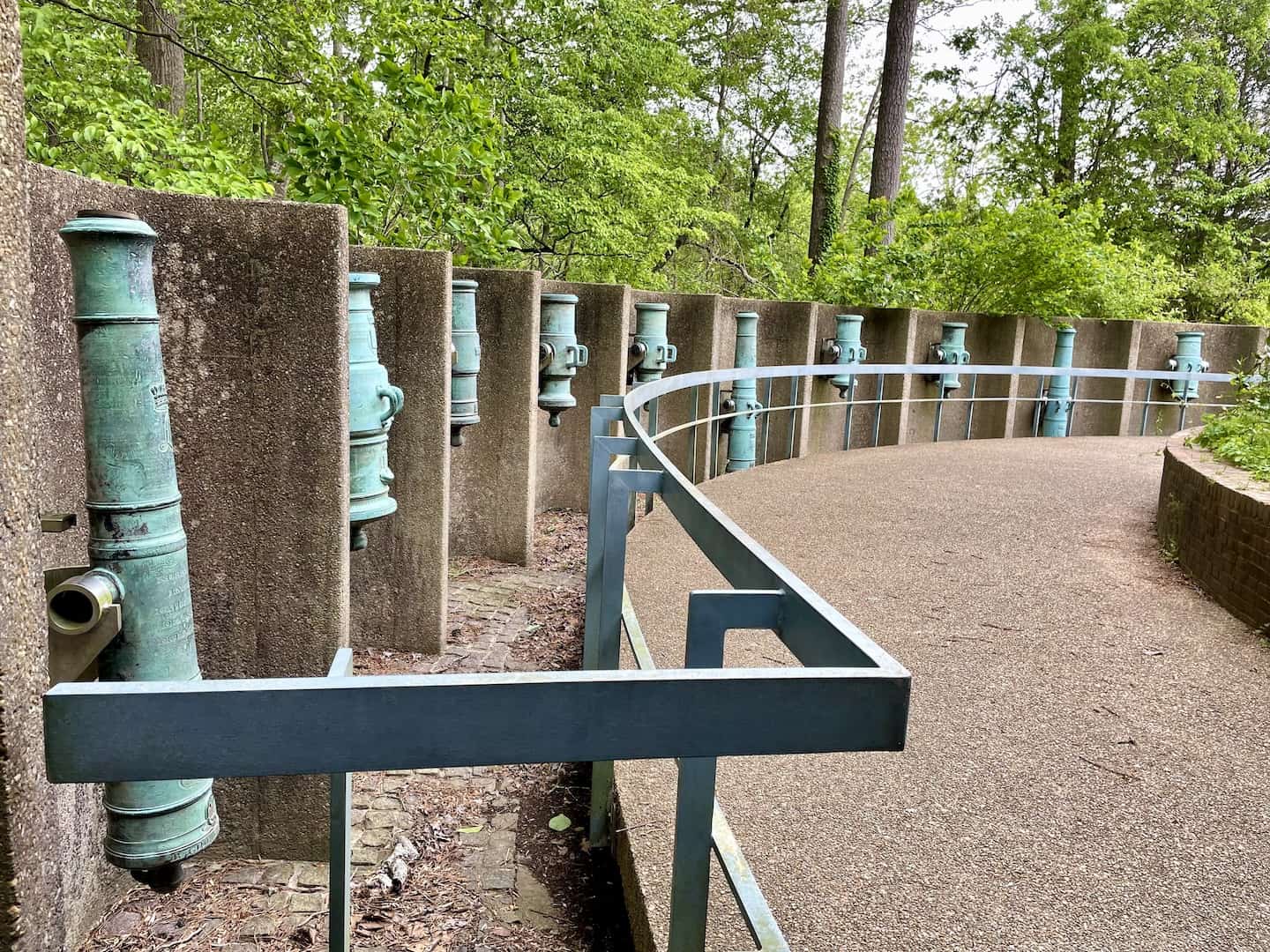
The American Revolution Museum of Yorktown
The American Revolution Museum of Yorktown does an excellent job of telling the stories of the people and the artifacts of the time. Several galleries of exhibits with artifacts and movies help engage visitors in the Battle of Yorktown, the momentous conflict. One movie has special effects that attempts to bring the battle to life. In addition, an outdoor encampment and farm exhibits welcome visitors. TIP: Buy combined tickets with the Jamestown Settlement, also a state-run site, and save money; visits do not need to be on the same day. 200 Water St, Yorktown, VA | 888-593-4682
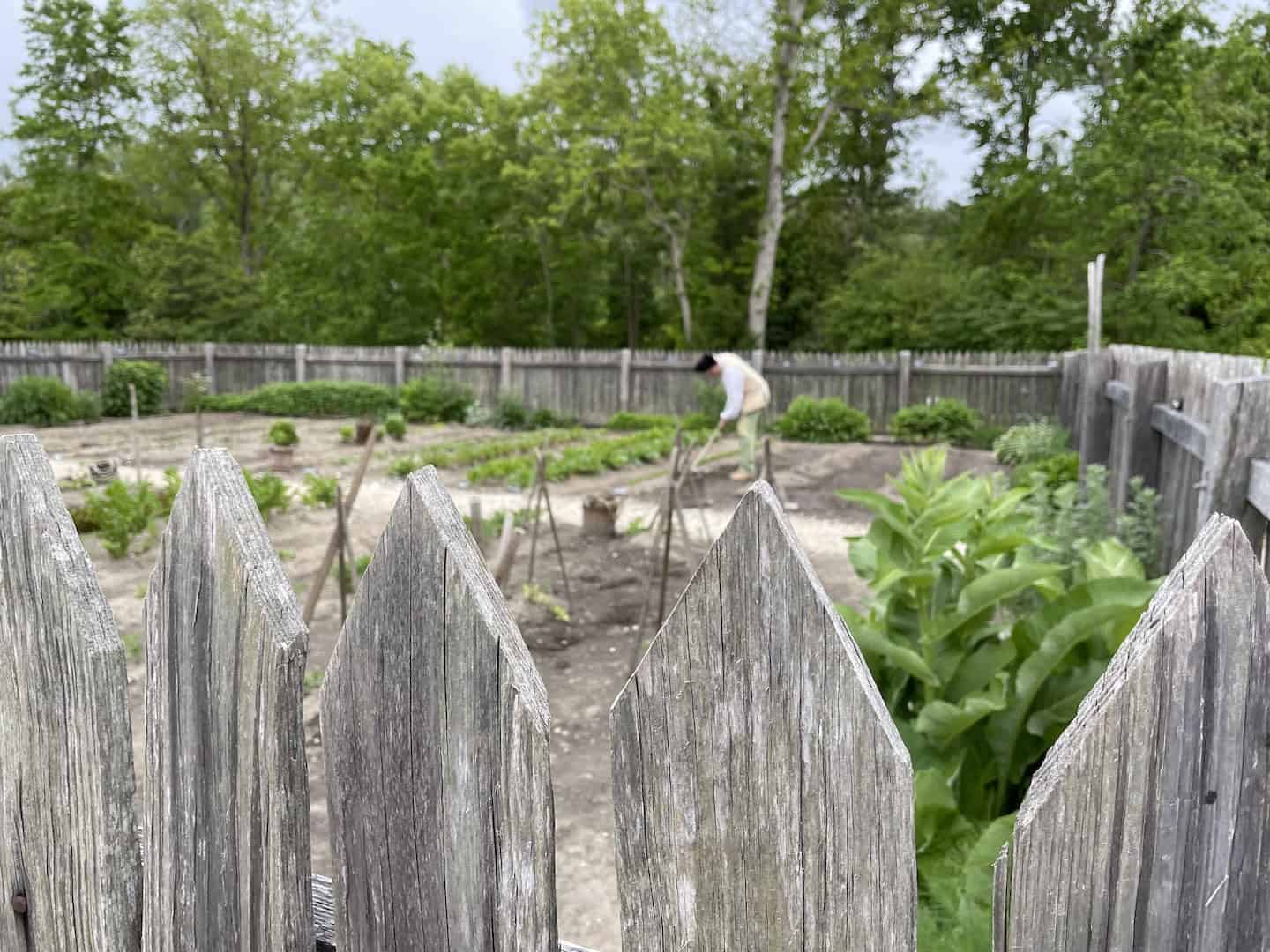
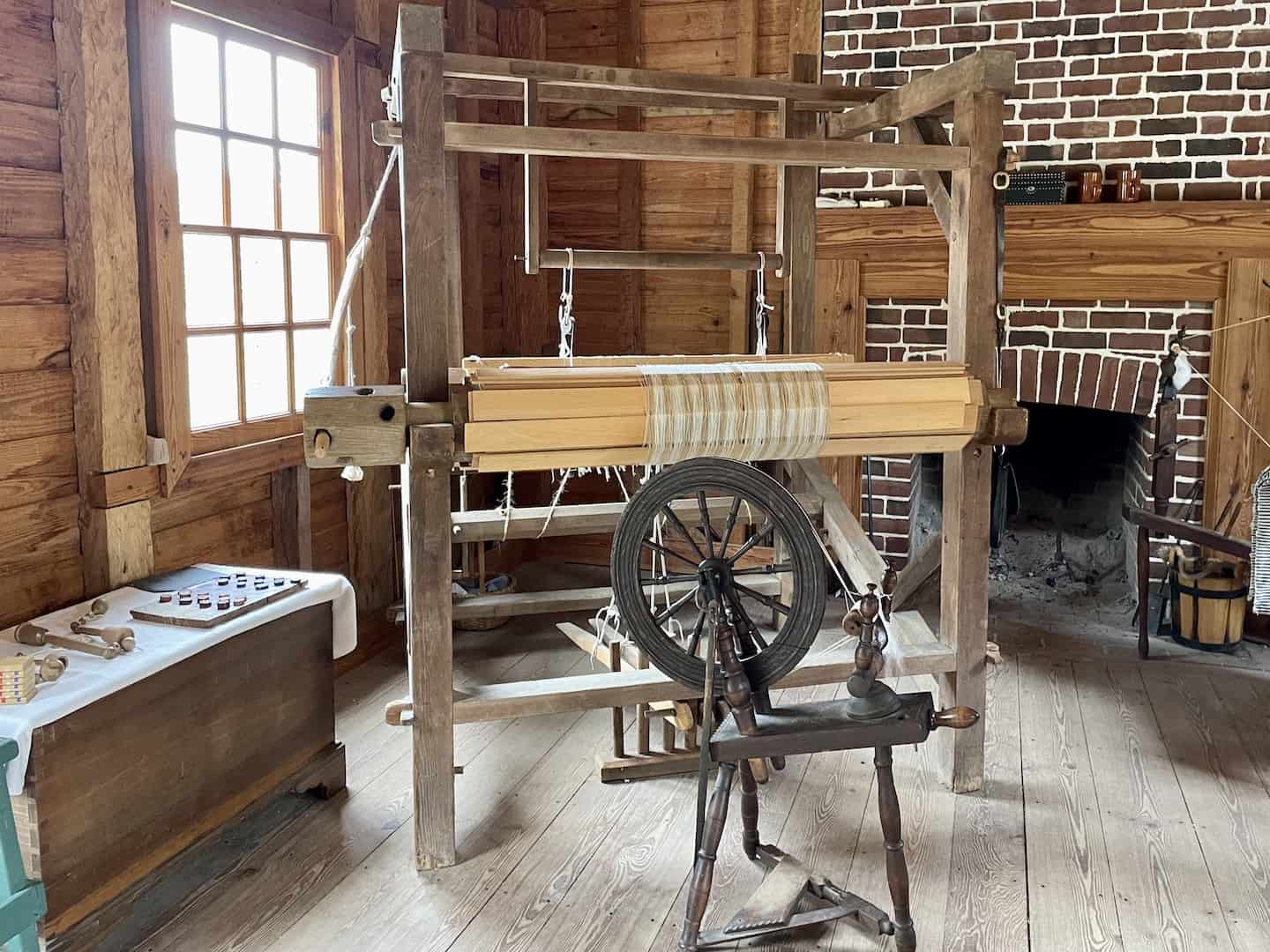
Yorktown Victory Monument
This 84-foot-tall monument was erected 100 years after the Battle of Yorktown occurred. Walk around the monument to read the inscriptions about the battle, the victory, the alliance with France, and the peace that resulted from the conflict. You can walk to the monument from Yorktown battlefield or drive; a parking lot is nearby. 803 Main St, Yorktown
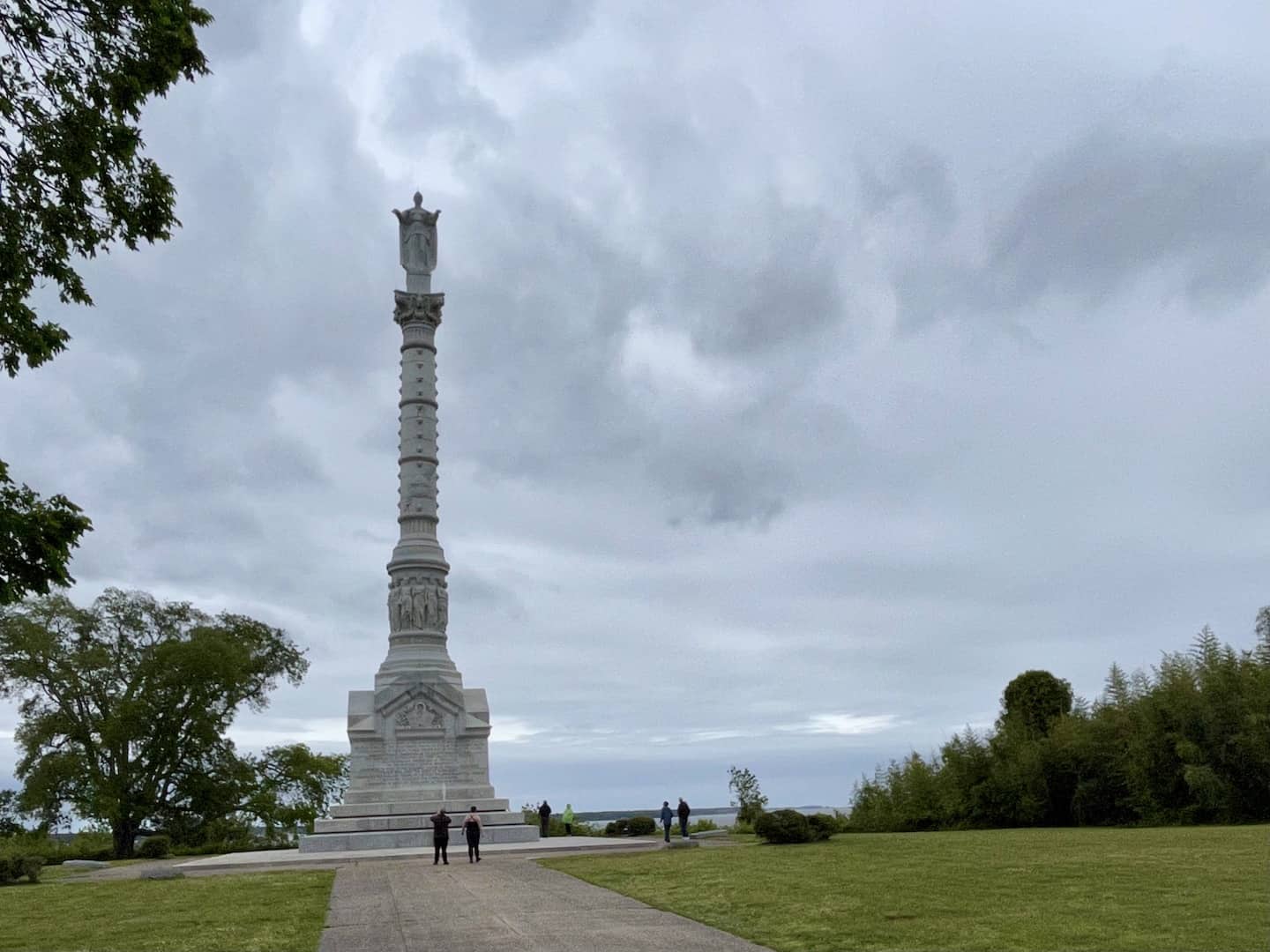
Downtown Yorktown
Yorktown’s Riverwalk Landing (425 Water Street) is a pleasant place to stroll along the York River waterfront. Several good restaurants and interesting shops lure visitors. Also in town are the Watermen’s Museum (309 Water Street) that showcases watermen’s roles on the Chesapeake Bay and the Nelson House (Main Street), the home of Thomas Nelson, Jr, who signed the Declaration of Independence and commanded some troops in the Battle of Yorktown.
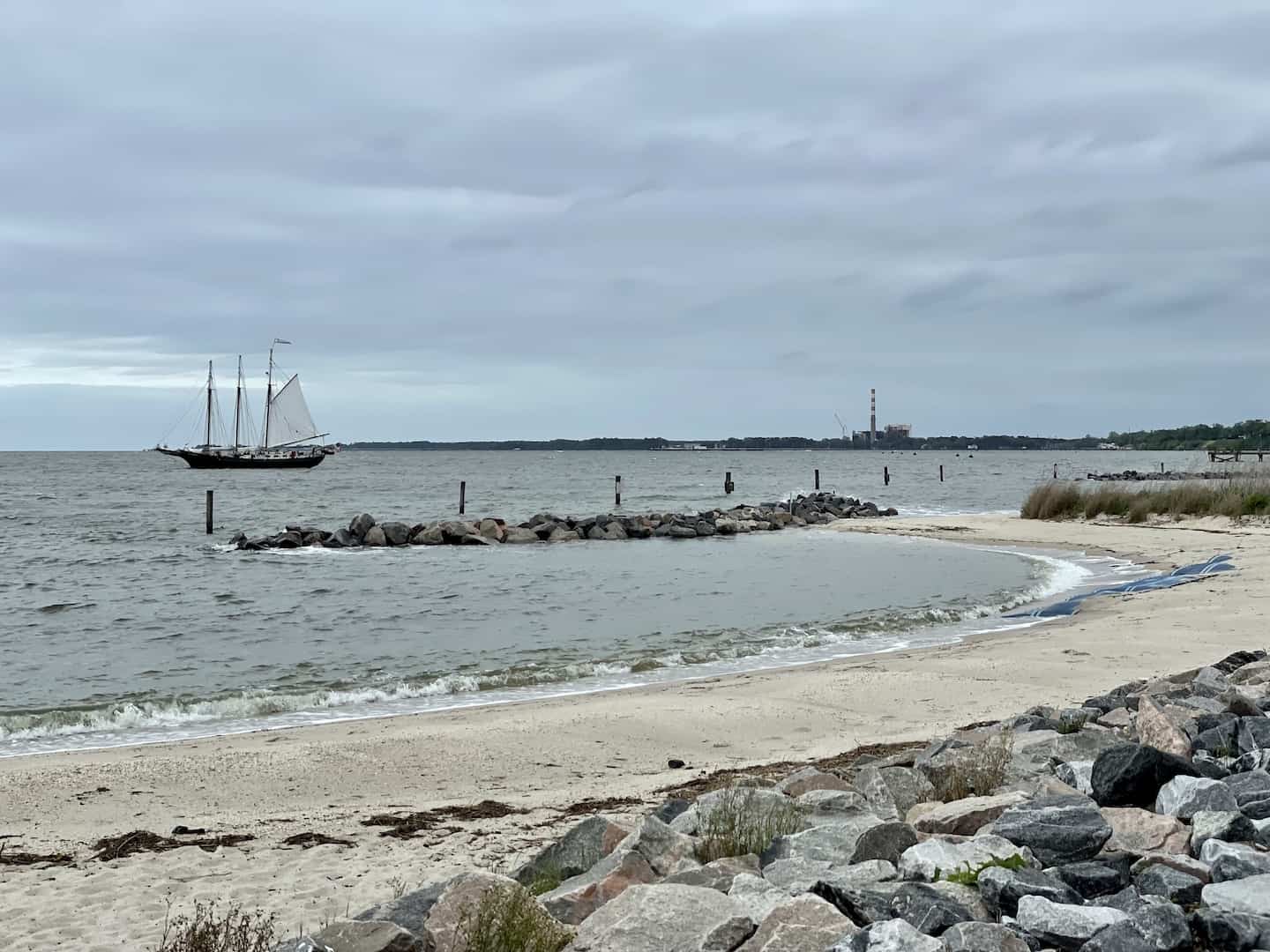
Tip: Begin your Yorktown visit with a morning tour of the Yorktown Battlefield, make a quick stop to view the Yorktown Victory Monument and drive by the Nelson House, relax for lunch at one of the restaurants on Riverwalk Landing, and conclude your afternoon with a visit to the American Revolution Museum in Yorktown. If time permits, add a stop to the Watermen’s Museum.
Related Articles
- Charlottesville – Explore America’s colonial history by visiting the estates of three of the country’s founding fathers, walk and hike scenic trails, and visit some notable wineries.
- Charlottesville Trails: Take a Walk Back in History – Discover some inviting trails at historical estates — Thomas Jefferson’s Monticello, James Monroe’s Highland, James Madison’s Montpelier — and nearby parks.
- Charlottesville Wineries: Sensational Sips in Virginia’s Heartland – Visit one — or all — of the top ten wineries in the greater Charlottesville area.
- Mount Vernon: A Detailed Guide to George Washington’s Home – President George Washington’s home and farm. In addition to a tour of his home, visitors can visit his gardens, tomb, farm, unique 16-sided barn, wharf, numerous outbuildings that supported the property and those who lived here — including enslaved people.
- Norfolk – Close to Virginia Beach, Norfolk is a lively place with three top attractions: Chrysler Museum of Art, Nauticus Maritime Museum (with a retired U.S. battleship to tour), and the Norfolk Botanical Garden.
- One Week in Historical Virginia – Consider our itinerary for a fabulous visit to this special part of the state.
- 16 Best Monuments and Memorials in Washington, D.C. – Visit a few or all of these great monuments including the most recent ones. Use this guide to plan your visit!
Final Thoughts
Visiting the Historic Triangle in Virginia really brought to life the lives and struggles of those early settlers to America. My husband and I have visited Williamsburg and the general area several times over the years. When we visited this time, we used Williamsburg as a base to explore the entire historic triangle, from the landing of the British in 1607 to the founding and growth of Williamsburg when it served as a colonial capital of the Virginia colony to the decisive Battle of Yorktown in 1781. We like to stay in a Colonial Williamsburg property, so we can easily walk to the colonial sites without having to get in the car. Plus Merchants Square in Colonial Williamsburg (west end of Duke of Gloucester Street) is filled with appealing restaurants and shops. Very convenient.
We really delved into the history this visit – more so than in the past, walking around the fort in Jamestown (the original at the Jamestown National Historic Site) and the recreated one at the Jamestown Settlement. Likewise, we explored Williamsburg once again, popping into the various historical buildings, strolling the well-tended gardens, and enjoyed an evening concert at the Governor’s Palace. (When planning your trip to Williamsburg, check online for all the events offered during the dates of your stay.) Finally, in Yorktown, we drove (and walked) through the battlefield and learned quite a bit from the excellent exhibits at the American Revolution Museum.
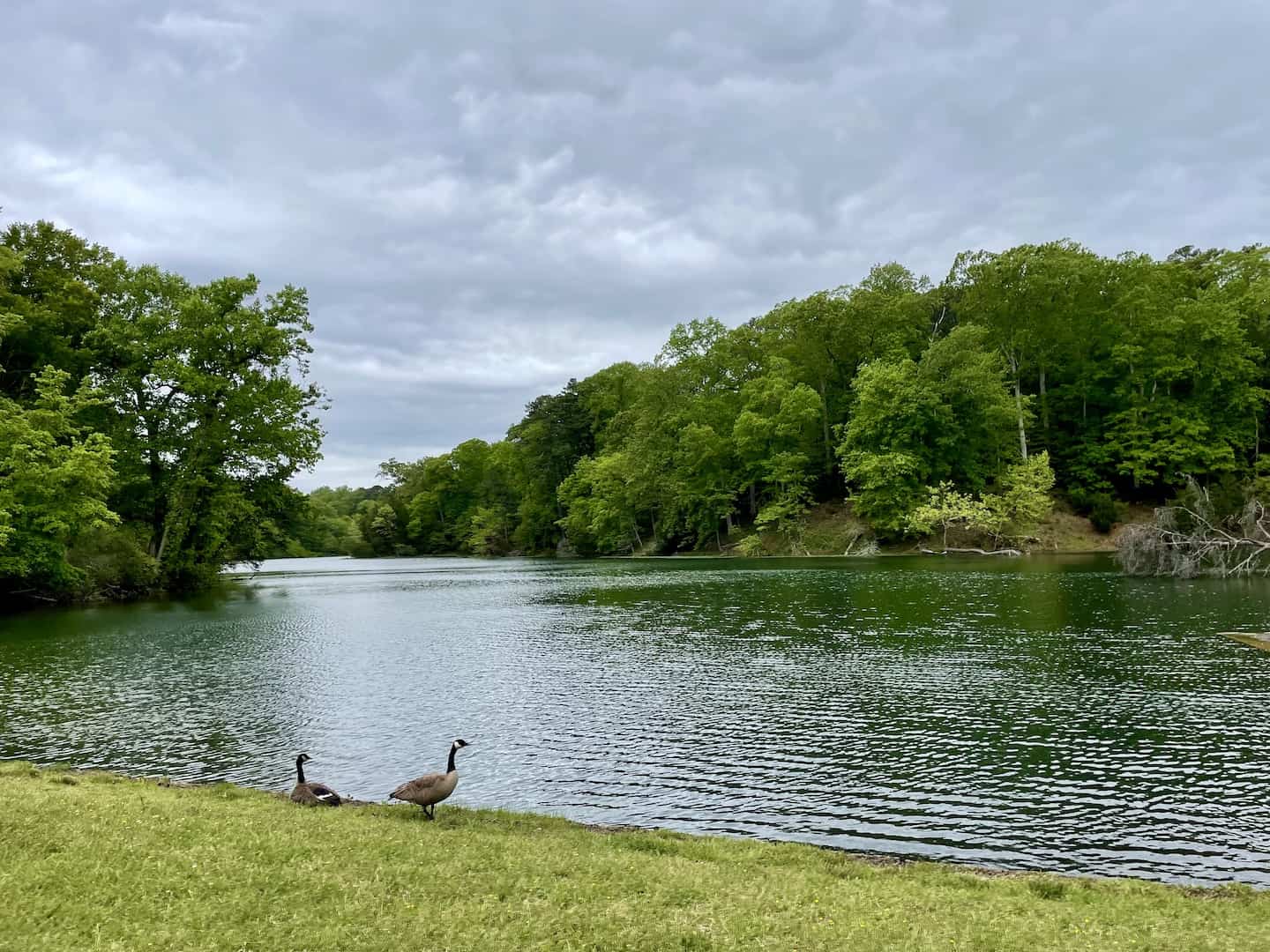
Comments?
Feel free to share your thoughts and experiences from a visit to Virginia’s Historic Triangle and/or the general area. 🙂

